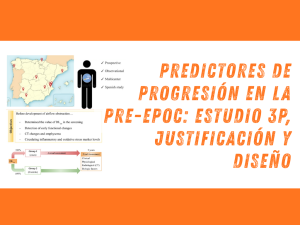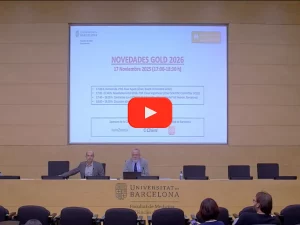All roads lead to COPD… or not?

Traditionally, COPD has been understood to be a self-inflicted disease caused by tobacco smoking, occurring in old, “susceptible” males and characterised by an accelerated decline of lung function with age. Yet, our understanding of the pathogenesis of COPD has changed very significantly over the past few years and, as a result, it is now defined as a heterogeneous condition that results from gene (G)–environment (E) interactions occurring over the lifetime (T) of the individual (GETomics) that can damage the lungs and/or alter their normal development/ageing process. As a result of this new understanding, the Global Initiative for Chronic Obstructive Lung Disease (GOLD) recognises the existence of a pre-COPD condition that identifies “… individuals of any age, with respiratory symptoms and/or other detectable structural (e.g. emphysema) and/or functional abnormalities (e.g. hyperinflation, reduced lung diffusing capacity, or rapid [lung function] decline), in the absence of airflow obstruction on post-bronchodilator spirometry […]. These patients may (or not) develop persistent airflow obstruction (i.e. COPD) over time”. GOLD 2023 also recognises the category of PRISm (Preserved Ratio (hence no airflow obstruction) with Impaired Spirometry) which may (or may not) develop chronic airflow limitation (CAL) over time. Understanding better which pre-COPD patients eventually develop CAL (or PRISm) may allow earlier and more effective preventive and management interventions.
Autores: Àlvar Agustí y Rosa Faner.
Puedes leer el artículo completo aquí https://erj.ersjournals.com/content/62/3/2301470
Noticias relacionadas

Predictores de progresión en la pre-EPOC: estudio 3P, justificación y diseño
Conoce el estudio 3P que analiza los factores que predicen la progresión de la pre-EPOC a EPOC en fumadores con espirometría normal.

Vídeo de la Presentación de las Novedades GOLD 2026
Video de la presentación «Novedades GOLD 2026», en el que se trataron, entre otros aspectos: cambios en diagnóstico de la EPOC, tratamiento, comparativa con GESEPOC, etc.
Últimos 5 enlaces a artículos de EPOC en esta web:
COPD
- 759578·Alberto Papi et Al.-Relationships between symptoms and lung function in asthma and/or chronic obstructive pulmonary disease in a real-life setting: the NOVEL observational longiTudinal studY
- 759785·Richard Beasley et Al – Prevalence, Diagnostic Utility and Associated Characteristics of Bronchodilator Responsiveness
- 759788·Alvar Agustí, Rod Hughes, Eleni Rapsomaki, Barry Make, Ricardo Del Olmo, Alberto Papi, David Price, Laura Benton, Stefan Franzen, Jørgen Vestbo, Hana Mullerova – The many faces of COPD in real life: a longitudinal analysis of the NOVELTY cohort
- 759883·Alberto Papi, Rosa Faner, Ian Pavord, Federico Baraldi, Vanessa M McDonald, Mike Thomas, Marc Miravitlles, Nicholas Roche, Alvar Agustí. – From treatable traits to GETomics in airway disease: moving towards clinical practice
- 768799·Surya P Bhatt Richard Casaburi Alvar Agusti et Al. Chronic obstructive pulmonary disease: hiding in plain sight, a Statement from the COPD Foundation Medical and Scientific Advisory Committee
Recuerda que puedes acceder a varios enlaces a artículos dentro de la categoría EPOC en esta web. También puedes acceder otros enlaces en el Listado de Artículos de la Cátedra de Salud Respiratoria.
Imagen obtenida en Canva Pro.
